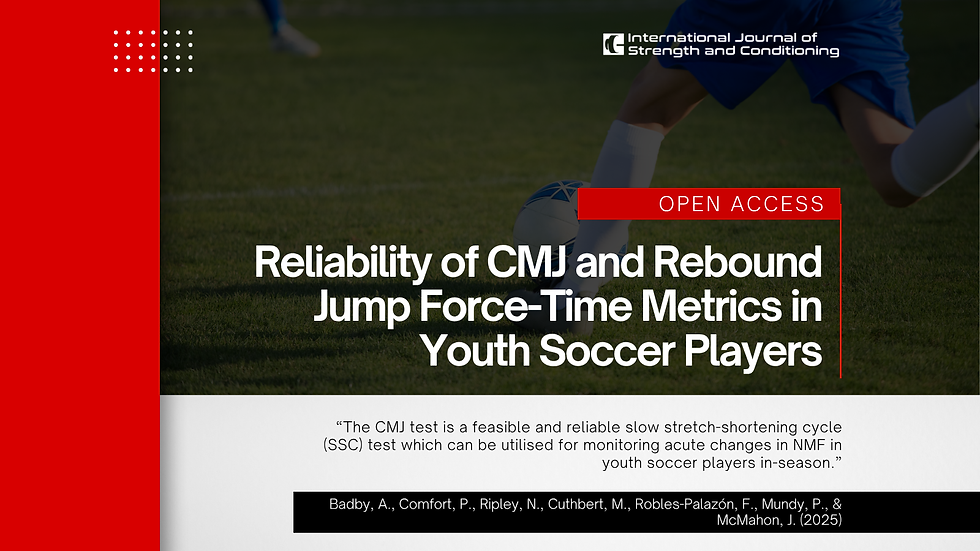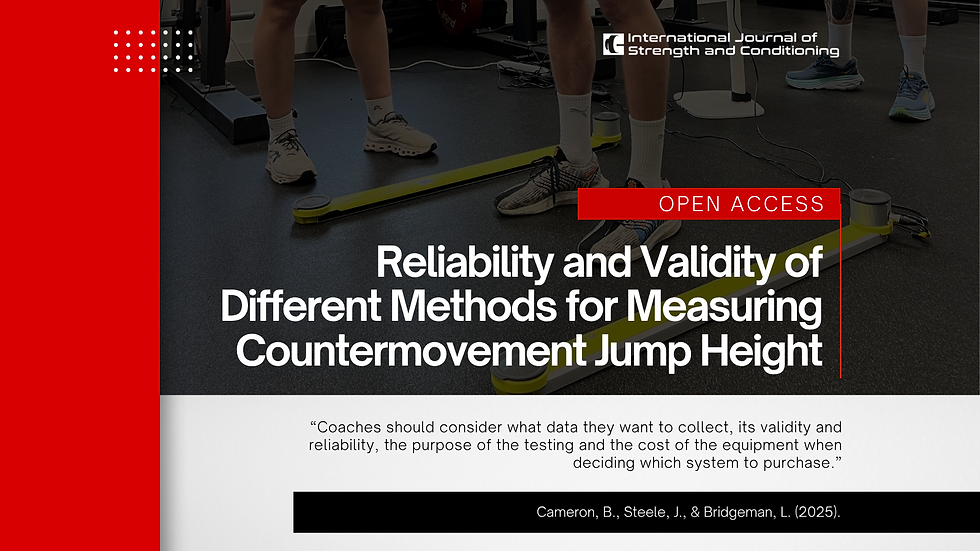Which Metrics Can I Monitor? Test-Retest Reliability of Countermovement Jump and Countermovement Rebound Jump Force-Time Metrics in Youth Soccer Players In-Season
- 2 days ago
- 2 min read
The IUSCA's International Journal of Strength and Conditioning is the world leading Diamond Open Access journal in S&C and Sport Science. We have recently published a new article by Badby, A., Comfort, P., Ripley, N., Cuthbert, M., Robles-Palazón, F., Mundy, P., & McMahon, J. (2025) titled "Which Metrics Can I Monitor? Test-Retest Reliability of Countermovement Jump and Countermovement Rebound Jump Force-Time Metrics in Youth Soccer Players In-Season”
Abstract
Previous research indicates the importance of the countermovement jump (CMJ) test to monitor lower-limb power and neuromuscular fatigue. While jump height (JH) can be measured using various equipment, this study compared the JH obtained from the Just Jump System (JJS), OptoJump and the MyJump2 app against the Vald ForceDecks system using the impulse-momentum calculation method, which is regarded as the gold standard method to calculate JH. This study also assessed the one-week test-retest reliability of these pieces of equipment. The participants in this study were 20 (n = 12 male and n = 8 female) university sports students and staff (mean ± SD; age: 20.90 ± 2.63 years; stature: 1.76 ± 0.10 m; mass: 72.17 ± 11.07 kg). Participants completed a standardised warm-up and rested for three minutes before completing three CMJs on each piece of equipment in a randomised, counterbalanced order. The same protocols were used in the second session, with a different equipment testing order. Both MyJump and OptoJump have high agreement levels (Mean bias and 95% CI = 2.32 cm [1.57 – 3.09] and 1.92 cm [1.23 – 2.59], respectively) with the gold measurement standard (ForceDecks using IM). However, a high mean bias for the JJS (Mean bias = 9.88 cm [9.26 – 10.46]) was reported. This study also found that all methods are reliable for assessing JH (Mean bias and [95% CI]: ForceDecks = 0.24 cm [-0.47 – 0.92], JJS = 0.74 cm [0.08 -1.42], MyJump = 0.05 cm [-0.57 – 0.71] and Optojump = -0.14 cm [-0.77-0.49]). Overall, the equipment investigated in this study showed high levels of reliability, and only the JJS had low validity compared to the ForceDecks. Coaches should consider what data they want to collect, its validity and reliability, the purpose of the testing and the cost of the equipment when deciding which system to purchase.
Click the link below to read the full article:







